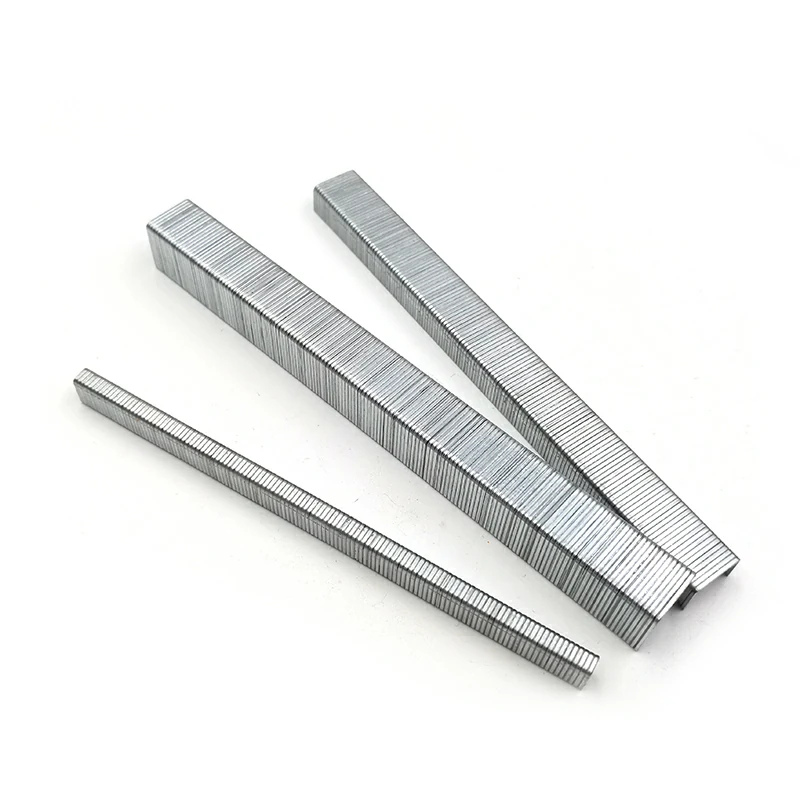How to Install 20 gauge crown staples?
Installing 20 gauge crown staples involves a few basic steps. Here is a general overview of the process:
Materials needed:
20 gauge crown staples
Staple gun
Work surface
Steps for installing 20 gauge crown staples:
Load the staple gun with the 20 gauge crown staples. Follow the manufacturer’s instructions for loading the staples into the gun. Make sure the staples are facing the correct direction and are loaded securely.
Position the staple gun on the work surface. Hold the gun firmly with both hands.
Place the material to be stapled on the work surface, with the area to be stapled facing up.
Align the staple gun with the location where the staple is needed. Press the gun firmly against the material.
Squeeze the trigger of the staple gun to release the staple. Make sure to apply enough pressure to ensure that the staple penetrates the material and holds securely.
Repeat the process as needed to install additional staples in the desired locations.
When finished, unload any remaining staples from the staple gun according to the manufacturer’s instructions.
Tips for success:
Make sure to use the correct size and type of staple for the material being stapled.
Keep the staple gun pointed away from yourself and others while in use to prevent injury.
Always wear appropriate personal protective equipment, 20 gauge crown staples such as safety glasses, when using a staple gun.
Practice on scrap material before using the staple gun on a finished project to ensure proper technique and avoid mistakes.
What are some common mistakes to avoid when installing staples?
When installing staples, there are several common mistakes that can be made. Here are some mistakes to avoid:
Using the wrong size or type of staple: It’s important to use the correct size and type of staple for the material being stapled. Using the wrong staple can result in a weak hold or damage to the material.
Stapling too close to the edge: Stapling too close to the edge of the material can cause it to tear or pull away from the staple. Make sure to leave enough space between the edge and the staple to prevent this from happening.
Over or underdriving the staple: Applying too much or too little force when driving the staple can result in a weak hold or damage to the material. Follow the manufacturer’s instructions for the correct amount of force needed to drive the staple.
Not aligning the staple gun properly: Proper alignment of the staple gun with the material being stapled is crucial for a secure hold. Make sure to align the gun with the location of the staple and press firmly against the material.
Not practicing proper safety precautions: Staple guns can be dangerous if not used properly. Always wear appropriate personal protective equipment, such as safety glasses, and keep the gun pointed away from yourself and others while in use.
Not testing the staple hold: After installing the staple, it’s important to test the hold to make sure it is secure. Pull gently on the material to ensure that the staple is holding properly.
By avoiding these common mistakes, you can ensure a secure and successful staple installation.
